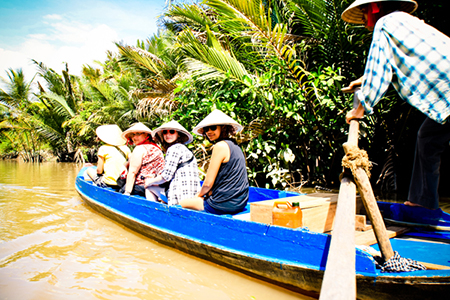Vietnam is the home of 54 ethnic groups with a population of about 93 million. The Viet (or Kinh) are the majority, making up 88% of the total population. They live mainly in the Red River Delta, the coastal plains of Central Vietnam, the Mekong River Delta, and urban centers. The 53 ethnic minorities live in the midlands and highlands across the country over an area accounting for 2/3 of the national territory. The most populous groups are the Tay, Thai, Muong, Hoa, Khmer, each group having a population of more or less than one million. The least populous are the Brau, Romam, O Du, each having only a few hundred people.
There is still a substantial disparity in the living conditions of various ethnic groups. While the Cham and Khmer people had to their credit a brilliant period of development, as testified by the remaining monuments and vestiges, many other ethnic groups are still engaged in slash-and-burn agriculture, especially in the highlands of North-Western Vietnam and on Truong Son mountain range.
The peculiarities of each ethnic group are also, among other things, demonstrated in architectural works such as temples, pagodas, towers, and, especially dwelling houses.
In general, houses of the ethnic groups living in Vietnam may be classified into 3 groups: houses on stilts, houses with ground floor and houses that are partly on stilts, and partly with the ground floor. According to statistics, around 30 ethnic groups live in houses on stilts, 20 in houses with ground floor, and 5 dwell in all the 3 kinds of houses. Nowadays, thanks to economic growth, in areas contiguous to highways and railways, stilt houses or wooden houses of ethnic minorities are giving place to brick houses with the ground floor.
In this book, the term "traditional Vietnamese architecture" refers to the architecture of the Kinh (Viet) ethnic majority, while the term "local architecture" refers to that of the ethnic minorities in the locality concerned.



